Toshiba AC100 netbook review
Toshiba's latest netbook uses Android instead of Windows and has an Nvidia processor instead of an Intel Atom. Yet, despite its low weight, long battery life and HD video playback, we have mixed feelings about it. Read our exhaustive review to find out why.
We have very mixed feelings about the Toshiba AC100. We love the long battery life, the slim and lightweight build and the comfortable keyboard. The smooth 1080p video playback is impressive for such an affordable netbook. Unfortunately, the Android interface is currently ill-suited for use with a touchpad and keyboard instead of a touchscreen. The omission of Android 2.2 and its business features, well as the lack of the Android Market, limits the AC100's usefulness even further.If you have basic, undemanding computing needs, or want a cheap portable HD playback device, the AC100 is a bargain. Discerning professional users will find the operating system wanting and should hold off until Toshiba improves it further.
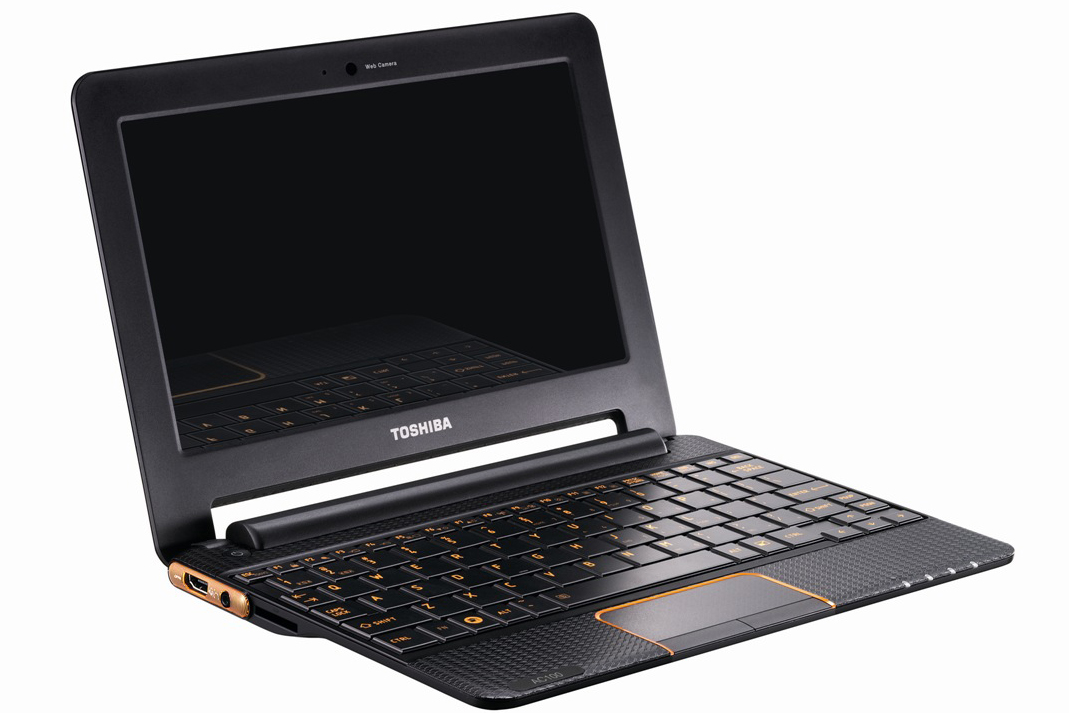
The Toshiba AC100 Android netbook
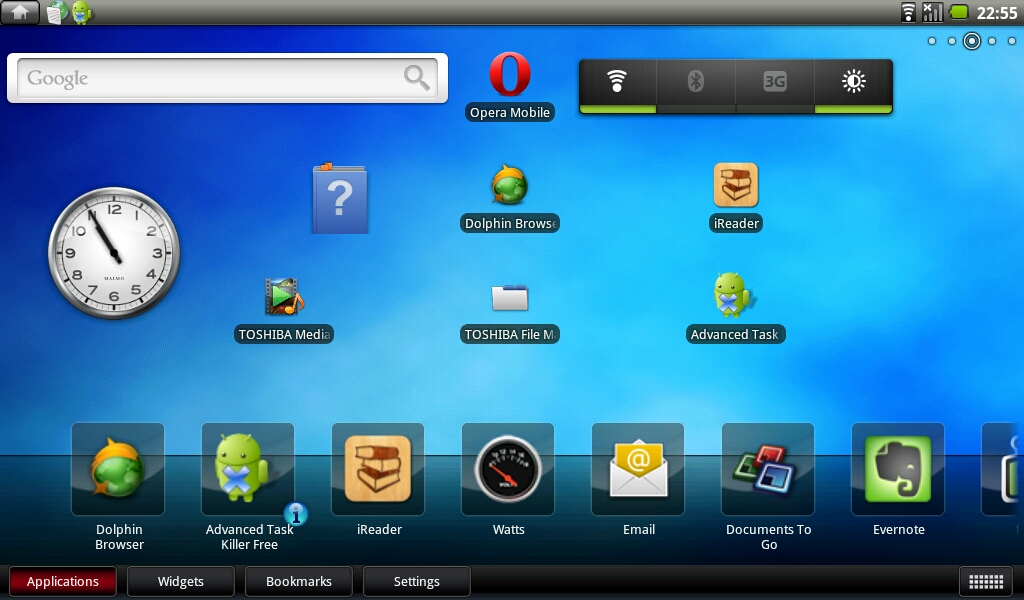
The AC100's home screen with Toshiba's app dock
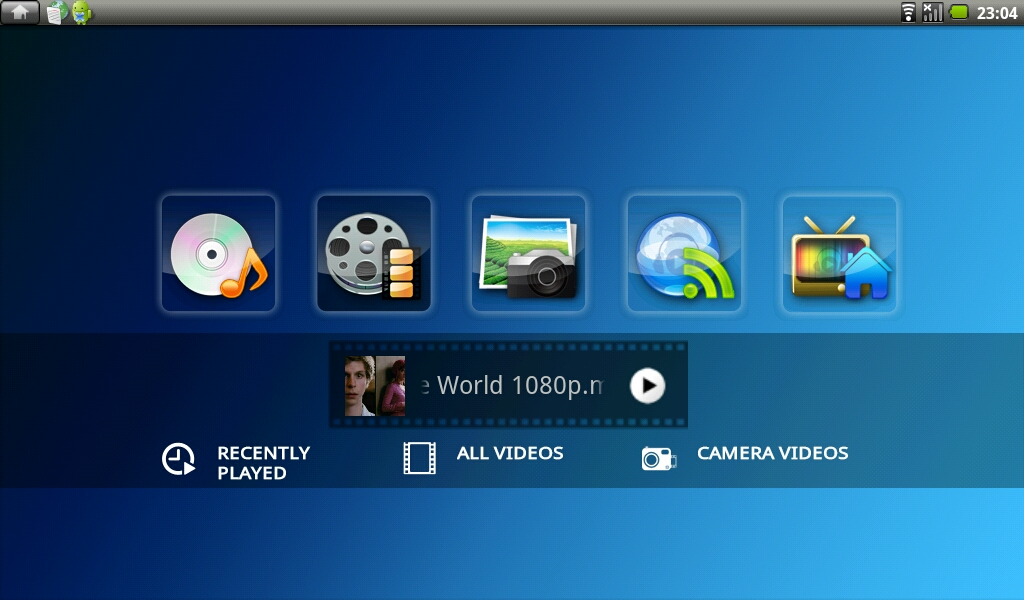
The AC100's bundled Toshiba Media Player app
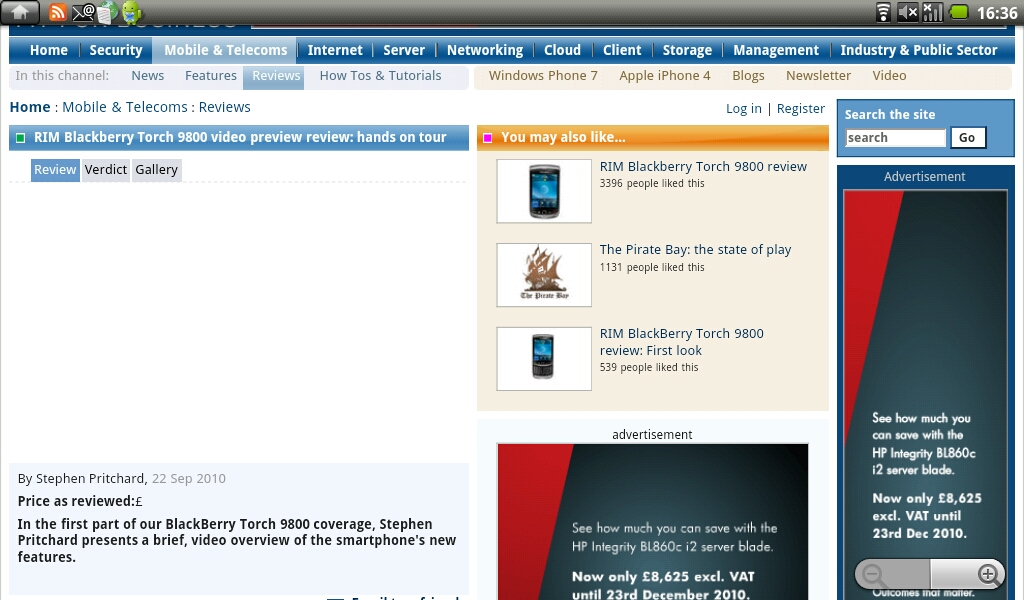
The AC100 comes with Android 2.1 which isn't compatible with Flash Player, so streaming videos such as those on www.itpro.co.
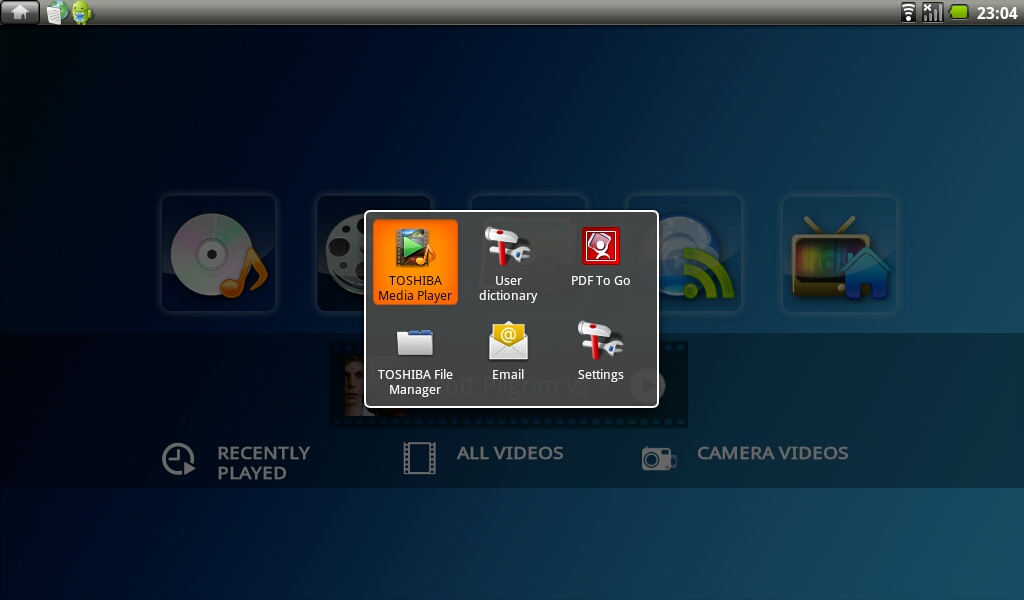
The app switcher for multitasking on the Toshiba AC100
Netbooks started out as cheap, compact and lightweight mini laptops good for little more than accessing the internet when they were first introduced several years ago. They have since developed into more powerful and fully-featured ultra-portables, but they are now also more expensive.
Toshiba's latest netbook, the AC100, is a mixture of both traditions. It's incredibly cheap at just 201 ex VAT, yet it can play 1080p high definition video. Most interestingly of all, unlike the Intel Atom and Windows-equipped netbooks we're used to seeing, the AC100 uses an Nvidia processor and comes with Android 2.1.
Using Android with a netbook's keyboard and touchpad instead of a touchscreen feels very strange and takes some getting used to. It's tempting to expect things to work the way they do on Windows or MacOS, or try to use keyboard shortcuts from those operating systems, only to find that Android works quite differently. For example, although there's an onscreen cursor, there isn't a menu bar or overlapping windows.
This isn't necessarily a bad thing. Android's minimalist single window interface means the 1,024x600 pixel screen doesn't feel as cramped as it does on Windows netbooks with the same resolution. It booted in under 30 seconds, which is very quick. Toshiba has added a scrolling dock to the standard Android interface where you can store your favourite applications, widgets and bookmarks. Navigating the dock by clicking and holding on it with the left button, while dragging along the pad feels awkward and clumsy. Thankfully, it works much better using the cursor keys.
Unfortunately, Toshiba has made few other alterations to Android to make it work better with a keyboard and touchpad. The Toshiba file browser, for example, doesn't support drag and drop for copying files you have to use a checkbox interface for selecting, copying and pasting files instead. There doesn't appear to be a universal system for copying and pasting text and images between apps and documents different apps, if they support copy and paste at all, appear to use different keyboard shortcuts or commands. These are often difficult to figure out without resorting to the documentation. It is very confusing and frustrating.
Although the Android operating system is open source, Google only allows authorised Android devices to come bundled with its own-brand apps, such as Google Maps and the Android Market app. Unfortunately, the AC100 isn't an authorised device, so finding more Android apps can be tricky. An alternative app store, the Camangi Market, is pre-installed but the available selection of apps is paltry and quite a few are aimed at Chinese and Japanese speakers and therefore don't have English versions. It is of course possible to simply download apps from the websites of individual developers, but some of the most popular Android apps are only available from the Android Market and many are of course developed with a touchscreen in mind, and not a keyboard and touchpad.
The interface feels responsive thanks to the dual core 1GHz Nvidia Tegra 250 processor and 512MB of RAM. Although this might seem meager by laptop standards, it's powerful compared to smartphones and many other netbooks. We didn't notice any slowdown when running several applications simultaneously. It's powerful enough to play 720p and 1080p high definition H264 videos using the bundled Toshiba Media Player app.
Given the 10.1in screen's low resolution, HD videos have to be displayed on a high definition TV or display connected to the standard-size HDMI port. The 10.1 display is very bright, even when turned down to conserve battery life, although its glossy sheen does reflect light very easily, causing glare.
It is possible to get more serious work done on the AC100. The bundled email app connected to our Exchange 2003 server without any problems. The rendering of HTML emails was surprisingly rudimentary and inaccurate though, while the lack of Android 2.2 means there's no support for Exchange calendars, Exchange address books and remote wipe ability.
Unlike the iPad's bundled email app, it's not possible to see the contents of the inbox and the currently selected email message at the same time only one or the other can be viewed at any one time. This is a shame as the iPad's interface makes it much easier and quicker to sort through large quantities of email. One handy feature is the ability to set the AC100 to flash its LED lights when you receive new email.
A basic version of the Documents To Go office suite is preinstalled. It can read documents, but not create new ones. We have our concerns about the app's ability to faithfully render complex Microsoft Office documents though. The lack of a universal printing system in Android could prevent you from printing your documents. Documents To Go doesn't support printing itself. Although dedicated printing apps are available, most only work with specific printers and are only available from the Android Market.
Documents To Go may be all you need to give presentations though, as it can open PowerPoint files which can be shown on an external screen or projector through the HDMI port. Text can look a little blocky and the HDMI port only supports mirroring, so you can't, for example, show the presentation on the external screen while keeping an eye on your presenter notes on the AC100's screen. Nonetheless, if your presenting needs aren't sophisticated, the AC100 is a capable replacement for a larger laptop.
The touchpad is fairly large and feels accurate, although the buttons should give more feedback when pressed. It's a missed opportunity that Toshiba didn't include a multitouch-capable touchpad to take advantage of Android's multitouch support. Annoyingly, it's far too easy to accidentally brush against the touchpad when typing, inadvertently moving the cursor.
The keyboard feels responsive enough for accurate typing, although some of the keys, most noticeably the @ key, are narrower than the others and therefore a little harder to press accurately. Shortcut keys give quick access to the app switcher, web browser, email app and the settings app. These can be customized to launch apps of your own choosing.
The rest of the AC100's physical design is impressive. It's incredibly thin, just 20mm at its thickest point tapering down to a slender 13mm at its thinnest point. It weighs just 867g, which is lighter than many Atom-based netbooks which usually weigh between one and 1.5kg. Although it feels lighter than the iPad, it's actually 100g heavier than Apple's tablet. It's attractive too, thanks to its ribbed black lid and orange trim.
Toshiba claims that the AC100's battery can last up to eight hours. Surprisingly, it exceeded this in our tests. In our light usage test, where it's set to scroll through a series of web pages until the battery depletes, the AC100 lasted eight hours and 43 minutes which is more than long enough for a transatlantic flight. This is especially impressive considering it only has a 25Wh battery. We'd only expect battery life of around three hours from an Atom and Windows netbook equipped with such a battery.
N wireless networking and Bluetooth 2.1 are built-in. For 50 more, a variant of the AC100 with a built-in 3G modem is available. There are two USB2 ports, but only one of them is a full-size port for connecting USB flash drives. The other is a mini USB port that allows you to connect the AC100 to your PC. This smartphone-like feature allows one to easily transfer files to and from the AC100's 8GB of solid state storage and makes up for the lack of an Ethernet port.
There's a SDHC slot for adding more storage and copying photos off memory cards. There's also a Kensington slot for attaching a laptop security cable. Oddly, the headphone socket also doubles as the microphone port, so you may need an adapter if you want to use a VoIP headset that has separate headphone and mic connectors.
If the one year collect and return warranty isn't long enough for your needs, a three year warranty with onsite service is available for an extra 125 ex VAT. It only covers repairs within Europe, the Middle East and Africa though. If you travel further afield, an international warranty extension is available for an extra 30 ex VAT, which is a bit cheeky especially as it doesn't guarantee onsite service.
Verdict
We have very mixed feelings about the Toshiba AC100. We love the long battery life, the slim and lightweight build and the comfortable keyboard. The smooth 1080p video playback is impressive for such an affordable netbook. Unfortunately, the Android interface is currently ill-suited for use with a touchpad and keyboard instead of a touchscreen. The omission of Android 2.2 and its business features, well as the lack of the Android Market, limits the AC100's usefulness even further. If you have basic, undemanding computing needs, or want a cheap portable HD playback device, the AC100 is a bargain. Discerning professional users will find the operating system wanting and should hold off until Toshiba improves it further.
Processor: Nvidia Tegra 250, 1GHz Memory: 512MB 800MHz DDR2 RAM Graphics: Nvidia GeForce ULP integrated Hard disk: 8GB solid state disk Display: 10.1in 1,024 x 600 pixels, LED-backlit screen Features: 1.3 megapixel camera, microphone, stereo speakers Connectivity: 802.11b/g/n Wi-Fi, Bluetooth 2.1 + EDR Ports: 1 x USB 2, 1 x USB 2 host, HDMI output, 3.5mm headphone and microphone combo audio socket Dimensions: 267x189x20mm (WxDxH) Weight: 867g Warranty: 1yr C&R warranty OS: Android 2.1 Part code: PDN01E-00700EEN BATTERY LIFE Light usage 8h43m POWER CONSUMPTION Sleep 1W Idle 5W
Get the ITPro daily newsletter
Sign up today and you will receive a free copy of our Future Focus 2025 report - the leading guidance on AI, cybersecurity and other IT challenges as per 700+ senior executives
-
 CyberOne appoints Microsoft’s Tracey Pretorius to its advisory board
CyberOne appoints Microsoft’s Tracey Pretorius to its advisory boardNews The threat intelligence leader will provide strategic guidance to CyberOne’s executive team
By Daniel Todd Published
-
 CISA issues warning in wake of Oracle cloud credentials leak
CISA issues warning in wake of Oracle cloud credentials leakNews The security agency has published guidance for enterprises at risk
By Ross Kelly Published
-
 Reports: White House mulling DeepSeek ban amid investigation
Reports: White House mulling DeepSeek ban amid investigationNews Nvidia is caught up in US-China AI battle, but Huang still visits DeepSeek in Beijing
By Nicole Kobie Published